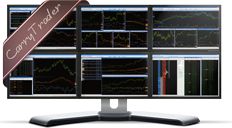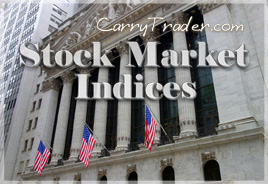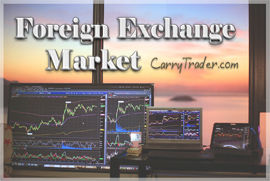 FOREX MARKET LIQUIDITY
FOREX MARKET LIQUIDITY
With a daily turnover of several trillion USD, the Foreign Exchange market is one of the most liquid markets worldwide.
Why is Market Liquidity important for an asset class?
When there is plenty of liquidity, pricing becomes more competitive, and that shrinks trading costs, more specifically:
(i) Trading spreads are diminishing (shrinking trading costs) due to high liquidity
(ii) Market risk is reduced as large transactions can be executed without a major impact on the price of an asset
(iii) Other trading risks are also reduced (such as the credit risk)
(iv) The participation of institutional traders is facilitated, and that improves the long-term prospects of any market
(v) There are more opportunities for the introduction of new investment products such as ETFs
Liquidity providers in the Foreign Exchange market
Liquidity providers (LP) in the Forex market refer to those participants who buy and sell currencies on behalf of third parties. A Forex liquidity provider usually trades its own accounts, but at the same time makes some money by facilitating brokers to fill their clients’ orders. In the currency market, liquidity providers include banks, large financial brokers, and some investment firms.
When trading via the STP (Straight Through Processing) protocol, all trading orders are automatically transferred to liquidity providers. Overall, there are two types of liquidity providers: Tier-1 and Tier-2.
Classification of Liquidity Providers and the corresponding Forex Broker models (ECN, DMA, STP)
There are two levels of Forex liquidity providers:
(1) Tier-1 Liquidity Providers
Tier-1 liquidity providers mainly include vast international banks such as:
-
Deutsche Bank, UBS, and Barclays Capital.
These three groups are the biggest liquidity providers in the Foreign Exchange market. All liquidity providers are electronically connected through the ECN (Electronic Communication Network).
However, there are also other categories of Tier-1 liquidity providers. For example, financial exchanges:
-
CME Group, LIFFE, CBOE, ICE (Intercontinental Exchange), and Singapore International Monetary Exchange
Finally, some very large hedge funds, financial brokers, and investment firms are trading directly on the ECN network and can be classified as Tier-1 liquidity providers. Note that about 10% of all financial brokers can directly access Tier-1 liquidity.
-
Forex brokers that can directly trade Tier-1 liquidity are called ECN Forex Brokers
-
Forex brokers that can directly connect to a large Tier-1 liquidity provider are called DMA (Direct Market Access) brokers
(2) Tier-2 Liquidity Providers
Tier-2 liquidity providers refer to financial entities that act as middlemen between Tier-1 institutions and financial brokers. These are some key Tier-2 liquidity providers in the Foreign Exchange market:
-
Currenex, LMAX Exchange, Integral, FXCM Pro, and Swissquote
The clients of Tier-2 liquidity providers are Forex brokers that do not have large enough volumes to connect with Tier-1 providers.
-
Forex brokers that access Tier-2 liquidity are called STP Forex Brokers (Straight Through Processing)
» Compare Forex Brokers and Trading Conditions
List of Liquidity Providers
The following table presents the largest liquidity providers worldwide.
Table: Major Global Liquidity Providers
|
UNITED STATES |
CME Group |
Morgan Stanley |
Citi Group |
CBOE Global Markets |
JPMorgan |
Equinix |
Currenex |
|
|
Goldman Sachs |
Merrill Lynch |
Nasdaq |
Bank of America |
FXSpotStream |
Tradepoint Systems |
EasyFX |
|
|
NYSE |
ICE |
Nadex |
FXDD |
GAIN Capital |
Seabury Global Markets |
TradAir |
|
|
Edgewater Markets |
FTPrime |
|
|
|
|
|
|
|
Spotex |
Jefferies |
Calypso Technology |
Global Trading Systems |
BNY Mellon |
oneZero Financial Systems |
Forexware |
|
EUROPE (EU) |
Euronext |
Deutsche Bank |
ABN AMRO Clearing |
Flow Traders |
Luxembourg Stock Exchange |
Societe Generale |
|
|
|
BNP Paribas |
TopFx |
|
|
|
|
|
|
UNITED KINGDOM |
Barclays Capital |
UK Clearing House |
Make Capital |
TP ICAP |
Finalto(Formerly as TradeTech Group) |
IXO Prime |
LMAX |
|
|
Refinitiv |
iS Prime |
CrescoFX |
CMC Markets |
Rayfin Solutions |
DMALINK |
CrescoFX |
|
|
FXCM Pro |
Quod Financial |
GMEX GROUP |
Sucden Financial |
FX Connect |
Standard Chartered |
London Stock Exchange |
|
|
XTX Markets |
Tickmill Prime |
|
|
|
|
|
|
SWITZERLAND |
UBS |
Credit Suisse |
BierbaumPro |
Swissquote |
SIX Swiss Exchange(SIX) |
|
|
|
JAPAN |
Nomura |
MUFG |
Mizuho Bank |
Tokyo Stock Exchange(TSE) |
|
|
|
|
HONG KONG |
Global eSolutions |
HSBC |
m-FINANCE |
Hong Kong Stock Exchange(HKEX) |
|
|
|
|
SINGAPORE |
Spark Systems |
Saxo Group |
Singapore Exchange |
|
|
|
|
|
AUSTRALIA |
The National Australia Bank (NAB) |
26 Degrees |
ACY Securities |
BAXTER-FX |
Macquarie |
|
|
|
CANADA |
CIBC |
Ticktrade |
RBC Capital Markets |
|
|
|
|
|
SAUDI ARABIA |
Saudi Stock Exchange (Tadawul) |
|
|
|
|
|
|
|
BELIZE |
ARVIS.FX |
|
|
|
|
|
|
How retail trading orders are transferred to liquidity providers?
This is the simple process that connects retail traders and liquidity providers:
(i) A retail trader places a market order on the trading platform of a retail broker
(ii) The broker automatically passes this order to a liquidity provider by charging the trader a commission based on the volume of the transaction ($/lot)
(iii) The liquidity provider executes the order on the market. The broker is charged with a commission based on the volume ($/lot)
Market Depth
Market liquidity is directly associated with the depth of the market.
 What is Market Depth?
What is Market Depth?
Market depth measures how much liquidity is available at various prices. It shows the aggregate volume of buy/sell pending orders at each price level. Note that pending orders are executed if the market reaches a specific price level.
Market depth highlights the ability of buyers and sellers to execute large market orders without significantly impacting the price of the asset.
The market depth is determined by:
-
The number of buyers and sellers who are frequently placing orders and making transactions
-
The size of buyers and sellers who are frequently making transactions
-
The participation of institutional traders and market makers
The more participants in the market, and the larger their size, the greater the market depth and the market liquidity.
Key Takeaways
-
Market liquidity is very important as it makes pricing more competitive and reduces trading costs. In the currency market, liquidity providers include banks, large financial brokers, and investment firms
-
There are two levels of Forex liquidity providers, Tier-1 and Tier-2. According to the access that they have to Tier liquidity, Forex brokers are classified as ECN, DMA, and STP
- Dealing-Desk (DD) firms are not classified as Forex brokers, as they create their own market without passing their clients' orders to Tier-1/Tier-2 liquidity providers
-
The key liquidity figure is trading volume. High trading volumes indicate an active market with high liquidity
-
Market liquidity is associated with the depth of the market. The depth of the market refers to the ability to execute large market orders without significantly impacting the price of the asset
-
High liquidity reduces market risks. Studies have shown that the lack of liquidity is associated with financial crisis
■ Forex Market Liquidity and Liquidity Providers (LPs)
G.P. for CarryTrader.com (c)
MORE ON CARRYTRADER
■ COMPARE PROVIDERS
► Brokers for Carry Traders
■ CURRENCY PAIRS
► EURUSD
► GBPUSD
► USDJPY
► EURGBP
► AUDUSD
► NZDUSD
► USDCAD
■ GLOBAL MARKETS
» Gold
■ LEARNING RESOURCES
» Currency indices
» CBOE Indices
» Forex Fundamentals
» The History of Interest Rates







